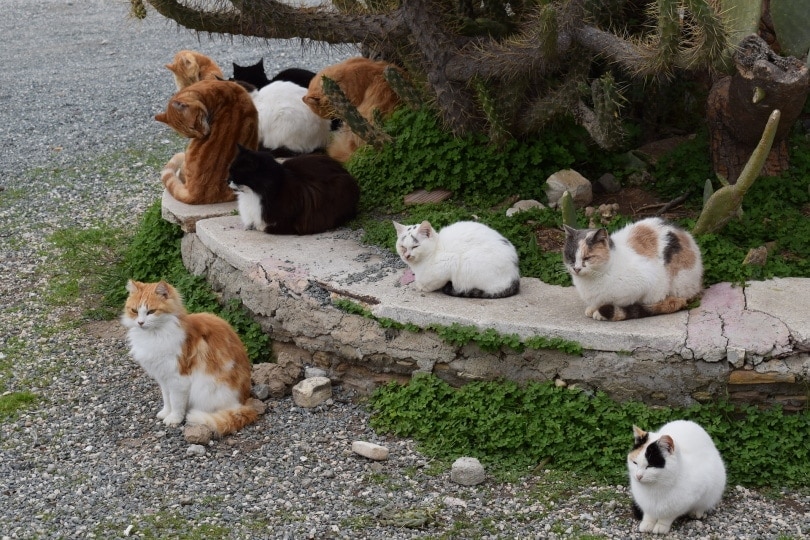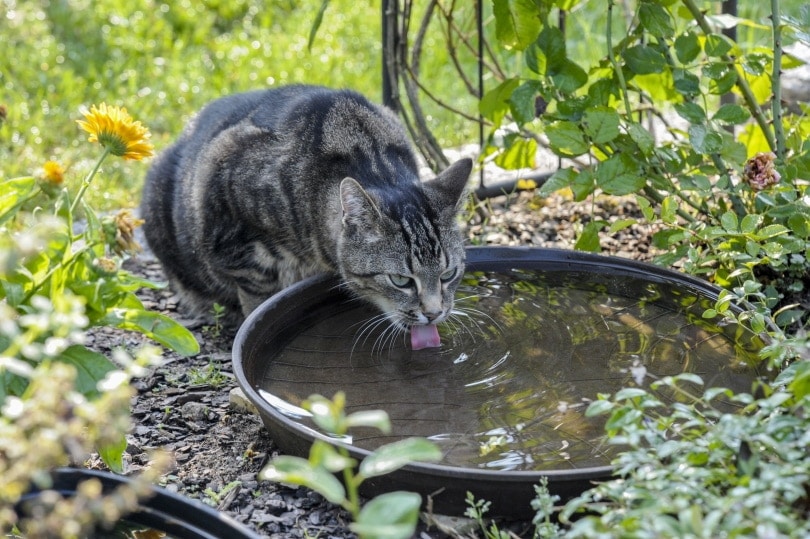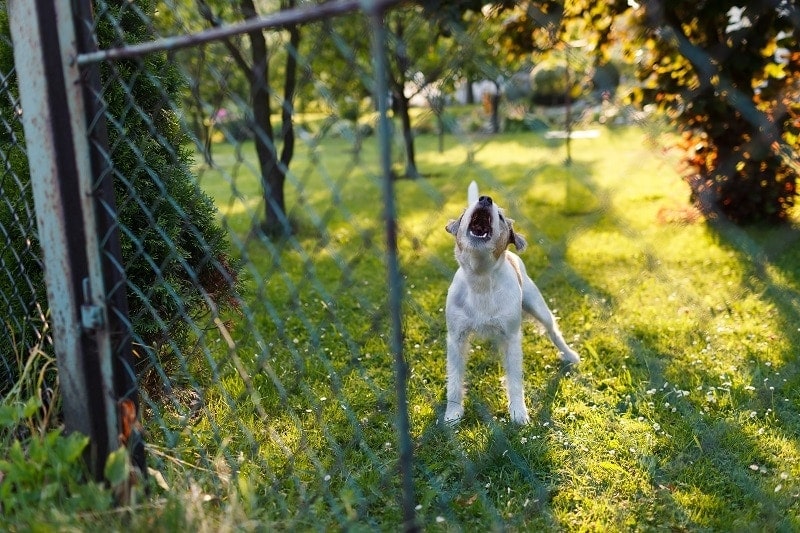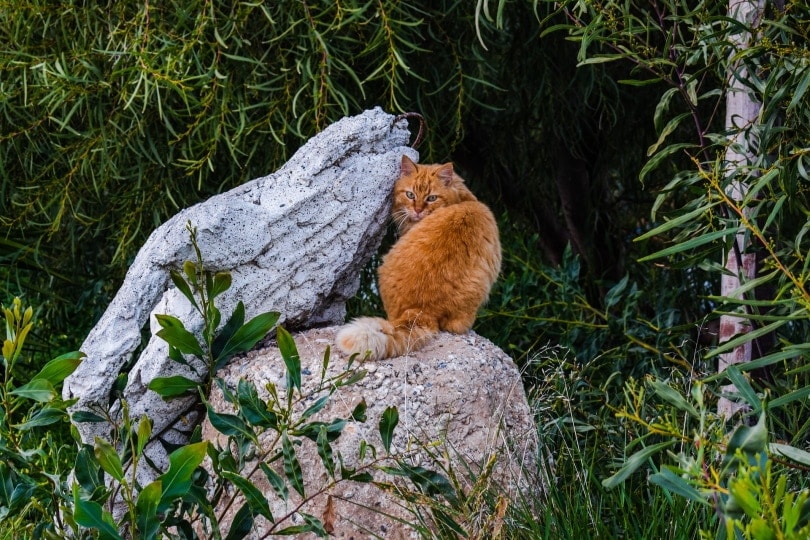Australia is often thought of as a land of incredible wildlife. But among this amazing ecosystem, felines aren’t a native fixture.
There are no species of large cats in Australia, but there is a huge population of feral domestic cats stemming from pet ownership after European settlers brought cats to the land.
These feral cats have wreaked havoc on the local ecosystem, hunting and killing native animals.

Does Australia Have Any Native Wild Cats?
Australia has a horde of unique, extraordinary, and downright strange endemic species. However, cats are not one of them.
Geologically, the continent of Australia broke off from the “mega continent” Gondwanaland before the evolution of felines as we know them. This island evolution created Australia’s unique wildlife, very different from that of the rest of the world.
Although there are no naturally occurring species of wild cats in Australia, there is a massive problem with feral domestic cats.
Cats have an extensive history across the globe but are relatively recent inhabitants of Australia, first arriving with European settlers in 1788.
Settlers brought cats to Australia on ships as pets and for pest control. These cats escaped and bred, leading to today’s huge feral population.
The feral cat population continues to be fueled by escaped, lost, and breeding pet cats.
The warm climate and abundance of prey have created ideal conditions for feral cats. Cats are now so common across the continent that they inhabit 99.9% of Australia’s landmass both as pets and in feral populations.

The Effect of Feral Cats on Australia’s Ecosystem
Feral cats are having a devastating effect on Australia’s ecosystem. They are listed as one of the world’s top invasive species and are a key threat to the survival of many of Australia’s unique native animals.
It is estimated that there are between 2 and 6 million feral cats in Australia, with an estimate of them killing millions of native animals every day.
The primary impact of feral cats is through predation, with a particularly high impact on native animals that are not part of their natural diet in other parts of the world.
This has led to the extinction of 20 mammal species in Australia since European settlement, and many more are under threat.
In addition to their direct impacts, feral cats also spread disease and compete with native animals.
The impact of feral cats has been so great that the Australian government has put a bounty on their heads to control their numbers. In some areas, a single feral cat can kill more than 2,000 animals per year, including reptiles, birds, and small mammals.
Feral Cats Are Pests
In 2015, feral cats were officially declared pests. This removed any protections against them and encouraged the active control of populations.
This was soon folded into the threatened species strategy, and as part of their 4-prong approach, they aimed to cull 2 million feral cats by 2020. This encouraged pest control activities, such as shooting and baiting, but also prioritized the promotion of responsible pet ownership.
In December 2020, the Australian government released a report that feral cats were the main driver of mammal extinction in the country..

Feral Cat Taskforce
The Feral Cat Taskforce is a national advisory, coordinating, and informal oversight group tasked with providing information and support to the Threatened Species Commissioner and the Department on implementing the feral cat actions and targets in the Threatened Species Strategy. Members from the Commonwealth, State and Territory Governments, NGOs, and key feral cat researchers:
The Feral Cat Taskforce is a group tasked with providing information and support to the Threatened Species Commissioner and the implementation of the feral cat population control and meeting targets set in the Threatened Species Strategy.
The group aims to provide regular reports on their progress towards meeting the Strategy’s ambitious target of halving feral cat numbers by 2025. In addition, the Taskforce also provides guidance on how best to control and manage feral cats, as well as highlighting any new research or developments in this area. Overall, the Feral Cat Taskforce plays a vital role in helping to protect Australia’s unique native wildlife from the threat of this invasive predator.
Controlling Feral Cats
- Trapping and euthanizing
- Shooting
- Baiting
- Use of guard dogs
- Fencing off areas to exclude cats
Each method has its own advantages and disadvantages, and it is important to select the most appropriate method for the situation.
The use of guard dogs has been shown to be an effective method of control, particularly in areas where other methods are not practical or feasible.
In general, the most important thing is to ensure that feral cats are controlled in a way that is humane and effective.

Responsible Pet Ownership
One of the best ways to prevent feral cats from becoming a problem in the first place is to ensure that all pet cats are spayed or neutered.
This will help to reduce the number of unwanted kittens that are born, and it will also help to reduce the temptation for people to abandon their cats when they become too much to handle.
In addition, responsible pet ownership also involves keeping cats confined to the home or garden and not allowing them to roam freely.
This will help to protect native wildlife from predation, and it will also help to keep cats safe from traffic and other hazards.

Final Thoughts
Feral cats are a major problem in Australia, and they are responsible for the extinction of many native animals. The best way to control their populations is through a combination of trapping, shooting, baiting, and responsible pet ownership. By working together, we can help to protect Australia’s unique wildlife for future generations.
Featured Image Credit: Dimitris Vetsikas, Pixabay
